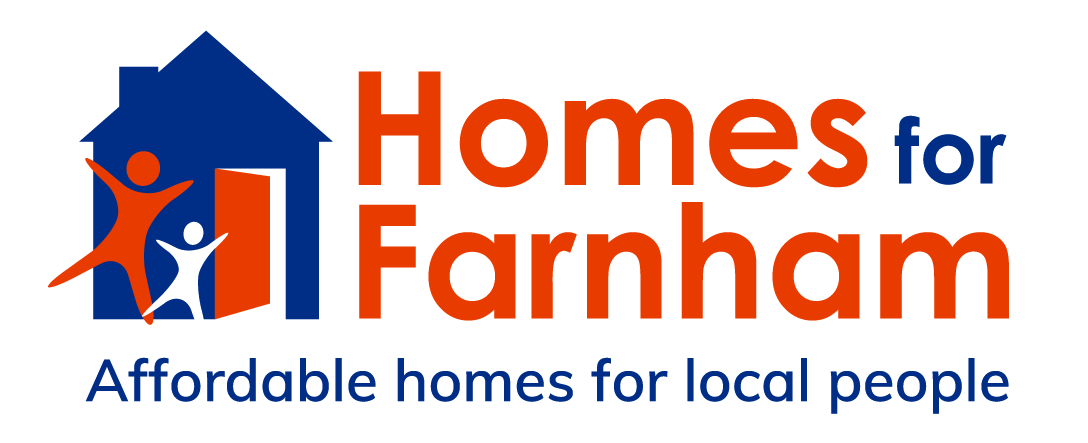Creating our vision and values
Who are we?

Who are we
The initiators of Homes for Farnham
At this very early stage of the project Homes for Farnham consists of a small group of people, who care about Farnham, the future of the town and the people in it. As individuals we are rooted in the Farnham community and have set up Homes for Farnham as a not-for-profit voluntary organisation for local people to learn about Community-Led Housing and how this new approach is able to build affordable homes. We’ve been inspired by other community housing groups elsewhere who have successfully completed projects providing affordable homes fully accountable to local communities. We are developing Homes for Farnham as a local housing hub to which anyone living or working in the Farnham district who faces housing issues is invited to join and share their experience: join here
Meanwhile the Steering Group is setting up a Community Land Trust (CLT) membership of which will be open to anyone living or working in Farnham. If you would like, in due course to be a trustee, please join the Steering Group. Contact us at moc.liamg@mahnrafrofsemoh

An ecological vision - more than just affordability
While affordability is the base-line for all emerging community-led housing projects in the UK, the motivating aspiration is for local housing provision to become more accountable to those who will reside in and benefit from the new homes. In which case, are there other outcomes of this aspiration for community accountability which would allow us to frame a more ecological, creative and compelling vision for affordable homes? Could this include creating a more holistic approach to affordable housing, one that enriches the ecology of local civic, cultural and economic life helping to reverse the “hollowing out” of urban places and damage to local environments by less accountable housing development? There are already community-led housing projects where democratically accountable and affordable ecological solutions have been achieved. These may be niche now, but community-led housing is one of the seeds of the new ecological economy that the pandemic is incubating. Our values and principles seek to underpin a core ecological vision for community-led housing in a time of climate change, economic uncertainty and biodiversity collapse.
(Sources: Tim Crabtree, raisetheroof.info)
Cost of renting privately is becoming less affordable at £1,100pcm in Waverley; key workers can spend 42% of income on rent.
Social Values - when thinking like an ecosystem
- Maintaining for local people the human right to a decent home in the place where they live and work, especially key workers and younger people being “priced out” of their hometown.
- Empowering people to be resilient in meeting their housing needs, mutually collaborating in all the processes that will shape their new homes in an ecologically beneficial way.
- Ensuring secure and stable homes through a structure of democratic ownership and governance which is accountable to the residents and their local community stakeholders.
- Providing for healthy homes in eco-designed houses that are spatially well considered and fitting for their location within a self-managing, caring neighbourhood.
- Sustaining the social diversity of a local community through the flexibility of CLH models to provide a range of adaptable housing designs and tenures suited to changing needs and conditions.
(Source: Martin Field, Collaborative Practice 2020)
Assemble win prestigious Turner Prize for Liverpool housing scheme


Environmental Values - when thinking like an ecosystem
- Creating places that are locally distinct and enrich the unique features of a locality’s geography, biodiversity and cultural use, ie. working with the site to create an appropriate housing design for that particular place
and community. - Adopting an ecological attitude towards building design and construction; use of local materials which closely relate housing design to the wider environment.
- Reducing carbon-footprint by the elimination of embedded carbon both in construction methods and materials, like use of low carbon concrete.
- Eliminating the use of so-called “sustainable” inorganic building materials that, through their toxicity and emissions, damage people and the local natural ecology.
- Using local, renewable materials: wood is good, it sequesters carbon and new technologies have made it very versatile.
- Lowering energy and water demands through thermal insulation, smart energy use and recycling/capturing water.
- Training in use of energy-efficient homes with renewable energy generation and storage systems.
- Recycling organic waste via composting as part of local land regeneration for food growing and biodiversity recovery.
(Source: Assemble Partnership, raisetheroof.info, 2020)
Economic Values - when thinking like an ecosystem
- Re-balancing the local building economy in favour of SME family builders and locally sourced procurement; increases local employment and business benefits.
- Holding land in trust, in perpetuity, to prevent unfair rent extraction and capturing for the community the
unearned uplift in value when land is granted planning permission for housing. - Helping to make houses affordable in perpetuity thereby increasing the stock of permanently affordable homes in the community.
- Determining affordability in terms of income not market values and increasing the range of tenures across affordable homes.
- Enhancing the disposable income of lower income families through energy-efficient homes.
- Increasing the opportunities for self-provisioning through cost efficient self-build and self-finish group projects.
- Challenging financialisation and asset speculation in the housing sector, leading to a more balanced UK wide economy.
- Making community-led housing attractive to local social and ethical investors in economically uncertain times.
(Source: Tim Crabtree, STIR issue 29)
learn more
